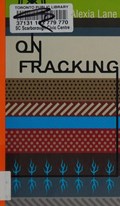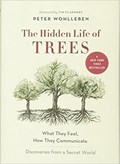Narrow Results By
Be(e)autiful - putting a price on pollinators
https://archives.whyte.org/en/permalink/catalogue25151
- Medium
- Library - Periodical
- Author
- Uniat, Elize Holmwood, Tara
- Publisher
- Edmonton : Alberta Conservation Association
- Call Number
- P
1 website
- Author
- Uniat, Elize Holmwood, Tara
- Responsibility
- Elize Uniat
- Tara Holmwood
- Publisher
- Edmonton : Alberta Conservation Association
- Physical Description
- p. 14 - 17
- Medium
- Library - Periodical
- Abstract
- Pertains to the native bees in Alberta and their dependancy on the PPR (Prairie Pothole Region) biodiversity for survial due to pesticides, parasites, climate change, and habitat loss.
- Notes
- In Conservation, Spring / Summer 2020
- Call Number
- P
- Collection
- Archives Library
- URL Notes
- Can be viewed online via Alberta Conservation Association website under "Conservation Magazine"
Websites
This material is presented as originally created; it may contain outdated cultural descriptions and
potentially offensive content.
Read more.
Fish stocking in Alberta
https://archives.whyte.org/en/permalink/catalogue25152
- Medium
- Library - Periodical
- Author
- Bailey, Ken
- Publisher
- Edmonton : Alberta Conservation Association
- Call Number
- P
1 website
- Author
- Bailey, Ken
- Responsibility
- Ken Bailey
- Publisher
- Edmonton : Alberta Conservation Association
- Physical Description
- p. 30 - 35
- Medium
- Library - Periodical
- Subjects
- Biodiversity
- Environment
- Environmental conservation
- Fish
- Fish hatchery, Banff
- Fishing
- Fishing - Banff National Park
- History
- Abstract
- Pertains to the history of fish stocking in Alberta with a focus on fish hatcheries, facility upgrades, stocking programs, and stocking vs. restoration, diseases, economic benefit, and environmental issues - specifically various types of trout
- Notes
- In Conservation, Spring / Summer 2020
- Call Number
- P
- Collection
- Archives Library
- URL Notes
- Can be viewed online via Alberta Conservation Association website under "Conservation Magazine"
Websites
This material is presented as originally created; it may contain outdated cultural descriptions and
potentially offensive content.
Read more.
Making sense of recent shifts in environmental policy - and what to do about it
https://archives.whyte.org/en/permalink/catalogue25211
- Author
- Schneider, Richard R.
- Responsibility
- Richard R. Schneider
- Physical Description
- p. 18 - 23
- Medium
- Library - Periodical
- Subjects
- Environment
- Environmental conservation
- Politics
- Government
- Alberta
- Land use
- Forestry
- Coal
- Coal and coal mines
- Birds
- Birds--Alberta
- Abstract
- Pertains to changes in environmental policy in Alberta including: removing parks, selling public lands, increasing forest harvesting, rescinding the coal policy, reducing environmental oversight, hunting cranes and swans. Includes a breakdown of land use policy changes into three phases and a call out to write to Premier Jason Kenny and Minister of Environment and Parks Jason Nixon to express opposition to these new policies.
- Notes
- In Nature Alberta, vol.50, no.2 (Summer 2020)
- Call Number
- P
- Collection
- Archives Library
- URL Notes
- Article can be viewed online via Nature Alberta
Websites
This material is presented as originally created; it may contain outdated cultural descriptions and
potentially offensive content.
Read more.
Canadians and the natural environment to the twenty-first century
https://archives.whyte.org/en/permalink/catalogue25269
- Medium
- Library - Book (including soft-cover and pamphlets)
- Published Date
- 2012
- Author
- Forkey, Neil S.
- Publisher
- Toronto : University of Toronto Press
- Call Number
- 04 F74c
1 website
- Author
- Forkey, Neil S.
- Responsibility
- Neil S. Forkey
- Publisher
- Toronto : University of Toronto Press
- Published Date
- 2012
- Physical Description
- 157 pages
- Abstract
- Canadians and the Natural Environment to the Twenty-First Century provides an ideal foundation for undergraduates and general readers on the history of Canada's complex environmental issues. Through clear, easy-to-understand case studies, Neil Forkey integrates the ongoing interplay of humans and the natural world into national, continental, and global contexts. Forkey's engaging survey addresses significant episodes from across the country over the past four hundred years: the classification of Canada's environments by its earliest inhabitants, the relationship between science and sentiment in the Victorian era, the shift towards conservation and preservation of resources in the early twentieth century, and the rise of environmentalism and issues involving First Nations at the end of the century. Canadians and the Natural Environment to the Twenty-First Century provides an accessible synthesis of the most important recent work in the field, making it a truly state-of-the-art contribution to Canadian environmental history (from publisher's website)
- Contents
- Introduction -- The classification of Canada's environments (1600s to early 1900s) -- Natural resources, economic growth, and the need for conservation (1800s and 1900s) -- Romanticism and the preservation of nature (1800s and 1900s) -- Environmentalism (1950s to 2000s) -- Aboriginal Canadians and natural resources : an overview -- Conclusion.
- ISBN
- 9780802090225
- Accession Number
- P2020.08
- Call Number
- 04 F74c
- Collection
- Archives Library
- URL Notes
- Publisher's website
Websites
This material is presented as originally created; it may contain outdated cultural descriptions and
potentially offensive content.
Read more.
- Medium
- Library - Book (including soft-cover and pamphlets)
- Published Date
- 2013
- Author
- Lane, C. Alexia
- Publisher
- [Victoria, British Columbia] : Rocky Mountain Books
- Call Number
- 03.6 L24o
1 website
- Author
- Lane, C. Alexia
- Responsibility
- C. Alexia Lane
- Publisher
- [Victoria, British Columbia] : Rocky Mountain Books
- Published Date
- 2013
- Physical Description
- 127 pages
- Abstract
- Around the world, a significant shift from conventional to unconventional energy extraction is occurring like never before. As traditional energy sources dwindle and the demand for fossil fuels continues to increase, civilization seems to be taking greater and greater risks in order to fuel our consumption and over-use of this planet’s natural resources. Hydraulic fracturing, or “fracking”, has emerged as a lightning rod of controversy as engaged citizens grow more and more concerned with the threats facing fresh water resources, local geology and sensitive landscapes. C. Alexia Lane’s first RMB Manifesto introduces readers to the practice of “fracking” and makes it clear that there is an urgent need for current policies to be reformed in order to alleviate ever-growing community, ecological and environmental concerns. (from publisher's website)
- Contents
- That was then ... -- This is now ... -- The wild wests : governance of water and energy in North America -- Environmental and health concerns -- Groundwater -- Future focus.
- ISBN
- 9781927330807
- Accession Number
- P2020.07
- Call Number
- 03.6 L24o
- Collection
- Archives Library
- URL Notes
- Publisher's website
Websites
This material is presented as originally created; it may contain outdated cultural descriptions and
potentially offensive content.
Read more.
The hidden life of trees : what they feel, how they communicate : discoveries from a secret world
https://archives.whyte.org/en/permalink/catalogue25271
- Medium
- Library - Book (including soft-cover and pamphlets)
- Published Date
- 2016
- Author
- Wohlleeben, Peter
- Billinghurst, Jane
- Publisher
- Vancouver, BC, Canada : David Suzuki Institute ; Vancouver, BC, Canada ; Berkeley : Greystone Books Ltd
- Call Number
- 04.1 W81t
1 website
- Responsibility
- Peter Wohlleeben (author)
- Jane Billinghurst (translator)
- Publisher
- Vancouver, BC, Canada : David Suzuki Institute ; Vancouver, BC, Canada ; Berkeley : Greystone Books Ltd
- Published Date
- 2016
- Physical Description
- xv, 272 pages : illustrations
- Abstract
- Are trees social beings? In The Hidden Life of Trees forester and author Peter Wohlleben convincingly makes the case that, yes, the forest is a social network. He draws on groundbreaking scientific discoveries to describe how trees are like human families: tree parents live together with their children, communicate with them, support them as they grow, share nutrients with those who are sick or struggling, and even warn each other of impending dangers. Wohlleben also shares his deep love of woods and forests, explaining the amazing processes of life, death, and regeneration he has observed in his woodland. After learning about the complex life of trees, a walk in the woods will never be the same again. Includes a Note From a Forest Scientist, by Dr.Suzanne Simard (from publisher's website)
- Contents
- Foreword / by Tim Flannery -- Introduction to the English edition -- Introduction -- Friendships -- The language of trees -- Social security -- Love -- The tree lottery -- Slowly does it -- Forest etiquette -- Tree school -- United we stand, divided we fall -- The mysteries of moving water -- Trees aging gracefully -- Mighty oak or mighty wimp? -- Specialists -- Tree or not tree? -- In the realm of darkness -- Carbon dioxide vacuums -- Woody climate control -- The forest as water pump -- Yours or mine? -- Community housing projects -- Mother ships of biodiversity -- Hibernation -- A sense of time -- A question of character -- The sick tree -- Let there be light -- Street kids -- Burnout -- Destination north! -- Tough customers -- Turbulent times -- Immigrants -- Healthy forest air -- Why is the forest green? -- Set free -- More than just a commodity -- Note from a forest scientist / by Dr. Suzanne Simard.
- ISBN
- 9781771642484
- Accession Number
- P2020.07
- Call Number
- 04.1 W81t
- Collection
- Archives Library
- URL Notes
- Publisher's website
Websites
This material is presented as originally created; it may contain outdated cultural descriptions and
potentially offensive content.
Read more.
Hope matters : why changing the way we think is critical to solving the environmental crisis
https://archives.whyte.org/en/permalink/catalogue25274
- Medium
- Library - Book (including soft-cover and pamphlets)
- Published Date
- 2020
- Author
- Kelsey, Elin
- Publisher
- Vancouver ; Berkeley : Greystone Books
- Call Number
- 04 K27h
1 website
- Author
- Kelsey, Elin
- Responsibility
- Elin Kelsey
- Publisher
- Vancouver ; Berkeley : Greystone Books
- Published Date
- 2020
- Physical Description
- 229 pages
- Subjects
- Environment
- Conservation
- Climate change
- Abstract
- We are at an inflection point: today, more people than ever before recognize that climate change and biodiversity loss are urgent and existential threats. Yet constant reports of climate doom are fueling an epidemic of eco-anxiety, leaving many of us feeling hopeless and powerless—and hampering our ability to address the very real challenges we face. Hope Matters boldly breaks through the narrative of doom and gloom that has overtaken conversations about our future to show why hope, not fear, is our most powerful tool for tackling the planetary crisis. Award-winning author, scholar, and educator Elin Kelsey reveals the collateral damage of despair—from young people who honestly believe they have no future to the link between climate anxiety and hyper-consumerism—and argues that the catastrophic environmental news that dominates the media tells only part of the story. She describes effective campaigns to support ocean conservation, species resilience, and rewilding, demonstrating how digital conservation is helping scientists target specific problems with impressive results. And she shows how we can build on these positive trends and harness all our emotions about the changing environment—anger and sadness as well as hope—into effective personal and political action. Timely, evidence-based, and persuasive, Hope Matters is an argument for the place of hope in our lives and a celebration of the turn toward solutions in the face of the environmental crisis. (from publisher's website)
- Contents
- The power of expectation and belief -- The collateral damage of doom and gloom -- Hope is contagious -- Stories change -- The age of personalization -- We are not the only ones actively responding -- The strength of empathy, kindness, and compassion -- Trending hopeful.
- Notes
- Published in Partnership with the David Suzuki Institute.
- ISBN
- 9781771647779
- Accession Number
- P2020.07
- Call Number
- 04 K27h
- Collection
- Archives Library
- URL Notes
- Publisher's website
Websites
This material is presented as originally created; it may contain outdated cultural descriptions and
potentially offensive content.
Read more.
Climate change and landscape in the Canadian Rocky Mountains
https://archives.whyte.org/en/permalink/catalogue25284
- Medium
- Library - Book (including soft-cover and pamphlets)
- Published Date
- 2006
- Author
- Rutter, Nat
- Coppold, Murray
- Rokosh, Dean
- Publisher
- Field, B.C. : Burgess Shale Geoscience Foundation
- Edition
- Revised Second Edition
- Call Number
- 03.2 R93c
- 03.2 R93c Reference copy
1 website
- Responsibility
- The Burgess Shale Geoscience Foundation
- Nat Rutter
- Murray Coppold
- Dean Rokosh
- Edition
- Revised Second Edition
- Publisher
- Field, B.C. : Burgess Shale Geoscience Foundation
- Published Date
- 2006
- Physical Description
- 137 pages : illustrations (chiefly color), maps, portraits
- Subjects
- Glaciers
- Climatology
- Climate change
- Environment
- Environmental conservation
- Geography
- Geology
- Abstract
- Climate change is at the forefront of public consciousness today. Political initiatives to combat the social and economic effects of changing climate will affect the lives of everyone. Media reports often portray climate scenarios and the range of uncertainty accompanying predictions. How does a reader approach the science behind the headlines? The goal of this book is to explain climate change science by examining the recent Ice Age history so spectacularly exposed in the Canadian Rocky Mountains landscape. Local and global sources of paleoclimate information are combined with dating techniques to unravel the glacial history of the Rockies over the last 30,000 years. The illustrated road log guide can be used by the armchair reader or the traveller to visit the landscape features essential to the interpretation. The Burgess Shale Geoscience Foundation is a non-profit charitable organization dedicated to increasing public understanding of the geosciences. Its teaching themes demonstrate the use of physics, biology, chemistry and mathematics in solving science questions and problems. The diverse program includes public lectures, teacher workshops, school programs and guided hikes. The Foundation conducts educational hikes to the Burgess Shale soft-bodied fossil deposit and the Mt. Stephen trilobite beds, both UNESCO World Heritage sites in Yoho National Park. (From Good Reads)
- Contents
- Introduction -- Archives of Climate Change -- Dating the Archives -- Extracting Climate Information -- Interpreting the Last Ice Age -- Finding Climate Change in the Rockies -- Glaciation in the Banff-Jasper Area -- Road Log Guide to Landscape Features -- Short Term Climate Change -- Future Climate Change -- Rood Log Stop Coordinates.
- Notes
- Sponsored by the CSPG Foundation
- ISBN
- 9780978013219
- Accession Number
- P2020.07
- Call Number
- 03.2 R93c
- 03.2 R93c Reference copy
- Collection
- Archives Library
- URL Notes
- Further research
Websites
This material is presented as originally created; it may contain outdated cultural descriptions and
potentially offensive content.
Read more.
Taking a break from saving the world : a conservation activist's journey from burnout to balance
https://archives.whyte.org/en/permalink/catalogue26197
- Medium
- Library - Book (including soft-cover and pamphlets)
- Published Date
- 2020
- Author
- Legault, Stephen
- Publisher
- Calgary, Alberta : Rocky Mountain Books
- Call Number
- 04 L52t
- Author
- Legault, Stephen
- Publisher
- Calgary, Alberta : Rocky Mountain Books
- Published Date
- 2020
- Physical Description
- 166 pages : illustrations ; 18 cm
- Subjects
- Self-Help
- Conservation
- Activism
- Environment
- Abstract
- A veteran of burnout himself, Legault looks at the culture of self-sacrifice that permeates the work done by volunteers and paid staff in the environmental conservation movement, and dissects how to manage our own time, energy, and commitment to our causes. Following a river-running metaphor, and proposing a variety of techniques to help with various states of anxiety resulting from burnout, including clarity of purpose, recognition of limits, fitness and diet, mediation and yoga, as well as organizational structural changes such as leave-of-absence policies, Legault encourages readers to find time to 'eddy out'--to rest a moment in quieter waters and scout downriver--to ensure our lifetime of engagement is fulfilling, effective, and self-sustaining. -- From Backcover
- ISBN
- 9781771603638
- Accession Number
- P2023.25
- Call Number
- 04 L52t
- Collection
- Archives Library
This material is presented as originally created; it may contain outdated cultural descriptions and
potentially offensive content.
Read more.
Organizing nature : turning Canada's ecosystems into resources
https://archives.whyte.org/en/permalink/catalogue26201
- Medium
- Library - Book (including soft-cover and pamphlets)
- Published Date
- 2023
- Author
- Biro, Andrew and Cohen, Alice
- Publisher
- Toronto ; Buffalo ; London : University of Toronto Press
- Call Number
- 04 B53o
- Publisher
- Toronto ; Buffalo ; London : University of Toronto Press
- Published Date
- 2023
- Physical Description
- xviii, 264 pages : illustrations, maps ; 24 cm
- Abstract
- Organizing Nature explores how the environment is organized in Canada's resource-dependent economy. The book examines how particular ecosystem components come to be understood as natural resources and how these resources in turn are used to organize life in Canada. In tracing transitions from "ecosystem component" to "resource," this book weaves together the roles that commodification, Indigenous dispossession, and especially a false nature-society binary play in facilitating the conceptual and material construction of resources. Alice Cohen and Andrew Biro present an alternative to this false nature-society binary: one that sees Canadians and their environments in a constant process of making and remaking each other. Through a series of case studies focused on specific resources--fish, forests, carbon, water, land, and life--the book explores six channels through which this remaking occurs: governments, communities, built environments, culture and ideas, economies, and bodies and identities. Ultimately, Organizing Nature encourages readers to think critically about what is at stake when Canadians (re)produce myths about the false separation between Canadian peoples and their environments."-- Provided by publisher.
- Contents
- 1. Introduction -- 1.1 From How to Why -- 1.2 From Ecosystem Components to Resources -- 1.3 Politics beyond Policy -- 1.4 Resourcification through Six Channels -- 1.5 Book Outline and Common Themes -- 2. Channels: From Ecosystem Components to Resources -- 2.1 Introduction -- 2.2 Governments -- 2.3 Communities -- 2.4 Built Environments -- 2.5 Culture and Ideas -- 2.6 Economies -- 2.7 Bodies and Identities -- 2.8 Summary and Conclusions -- 3. From Fish to Fisheries -- 3.1 Introduction -- 3.2 Salmon in British Columbia -- 3.3 Cod in Newfoundland and Labrador -- 3.4 Channels in Action: Organizing Fisheries -- 3.5 Summary and Conclusions -- 4. From Forests to Timber -- 4.1 Introduction -- 4.2 Growth of Timber: Saint John, New Brunswick -- 4.3 Trees, Not Timber: Port Renfrew, British Columbia, and Darkwoods -- 4.4 Channels in Action: Organizing Forests -- 4.5 Summary and Conclusions -- 5. From Carbon to Energy -- 5.1 Introduction -- 5.2 Coal in Nova Scotia -- 5.3 Oil and Bitumen in Alberta -- 5.4 Natural Gas and Fracking -- 5.5 Channels in Action: Organizing Carbon -- 5.6 Summary and Conclusions -- 6. From H2O to Water -- 6.1 Introduction -- 6.2 Diversions and Damming -- 6.2.1 Diversion -- 6.2.2 Damming -- 6.3 Drinking Water -- 6.3.1 Vancouver, 2006 -- 6.3.2 Walkerton, Ontario, 2000 -- 6.3.3 Asubpeechoseewagong Netum Anishinabek-Grassy Narrows, Ontario, 1962-? -- 6.3.4 Drinking Water: Summary -- 6.4 Channels in Action: Organizing Water -- 6.5 Summary and Conclusions -- 7. From Land to Property -- 7.1 Introduction -- 7.2 Soil -- 7.3 Symbol -- 7.4 Space -- 7.5 Channels in Action: Organizing Land -- 7.6 Summary and Conclusions -- 8. From Bodies to Life -- 8.1 Introduction -- 8.2 Wild(?)life: Non-Human Animals -- 8.2.1 Pets and Other Companion Species -- 8.2.2 Fish and Game: Wildness as Economic Resource -- 8.2.3 Parks as Spaces for Wildlife -- 8.3 Human Resources -- 8.3.1 Blood and Plasma -- 8.3.2 Surrogacy -- 8.4 The Channels in Action: Organizing Life -- 8.5 Summary and Conclusions -- 9. Resources: Organized and Organizers -- 9.1 Channels in Action -- 9.2 Common Themes -- 9.2.1 Commodification -- 9.2.2 Indigenous Dispossession -- 9.2.3 Artificial Nature-Society Binary -- 9.3 Why Does 'Resource Thinking' Matter? -- 9.3.1 Winning and Losing -- 9.3.2 Why Is It Important to Think beyond Policy?
- ISBN
- 9781487594848
- Accession Number
- P2023.22
- Call Number
- 04 B53o
- Collection
- Archives Library
This material is presented as originally created; it may contain outdated cultural descriptions and
potentially offensive content.
Read more.







